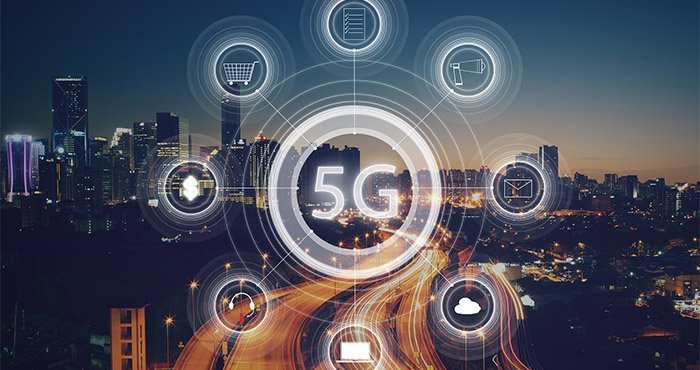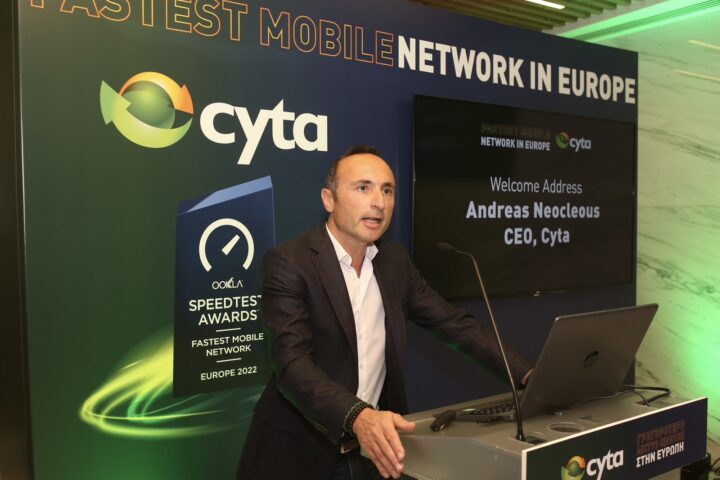With Cyprus 5G technology offering ultra-high internet access speeds through mobile and connected devices, just around the corner, concerns over its implications on human health are growing.
In Cyprus, some of its opponents have gone as far as to torch antennas, perceived to be part of the 5G network rollout.
However, experts say that there is no hard evidence suggesting that 5G infrastructure endangers health.
Cyprus is set to allocate 5G frequency platforms to the best four bidders before the end of the year while authorities see 5G entering our lives sometime in 2021.
Advanced next-generation services are poised to radically change all aspects of daily life, from work to the way we live with the development of smart cities and homes.
Experts claim that applications based on 5G networks can be used in healthcare with doctors even being able to examine and perform operations remotely as communication between devices will be facilitated.
New 5G technology will not replace the existing 4G technology, but rather complement it, increasing internet speeds by 10 to 100 times.
However, concerns over health risks connected with the 5G systems have been widely expressed.
Earlier this year scientists and health specialist attending a joint meeting of the Environment and Health Committees told MPs that “radiation from antennas can cause cancer”.
The fifth generation of telecoms technologies 5G, however, is fundamental to achieving a European gigabit society by 2025.
The aim to cover all urban areas, railways and major roads with uninterrupted fifth-generation wireless communication can only be achieved by creating a very dense network of antennas and transmitters.
In other words, the number of higher frequency base stations and other devices will increase significantly.
This raises the question as to whether there is a negative impact on human health and the environment from higher frequencies and billions of additional connections, which, according to research, will mean constant exposure for the whole population, including children.
Whereas researchers generally consider such radio waves not to constitute a threat, research to date has not addressed the constant exposure that 5G would introduce.
Talking to the Financial Mirror, head of the state Electronic Communications Department George Komodromos confirmed that providers will be providing 5G services in 2021.
He wanted to reassure the public that their health is not in danger from antennas to be installed.
He argues, the more antennas that are installed, the lower electromagnetic fields will be.
A large number of antennas means they would not need to emit high levels of electromagnetic fields as they will need less power to communicate between them.
“The total electromagnetic fields produced by cell phone antennas over 24 hours, equals the radiation hitting a mobile phone user after using a phone with a weak signal for 5 seconds.”
Komodromos said that mobile phones unable to receive a strong signal from a network, are programmed to increase their electromagnetic fields to get a better connection, thus emitting more radiation.
The Deputy Ministry of Innovation is currently preparing a campaign to inform people on what 5G really is and what changes it may bring about.
TVs have more radiation
Symeon Nicolaou, a professor at Frederick University’s electrical engineering department said people’s 5G fears are attributed to misinformation and a genuine concern over the large number of antennas needed to be installed.
“What people are worried about, are the effects of electromagnetic fields to be produced by the antenna network needed for 5G services,” said Nicolaou.
He said more electromagnetic fields are being emitted by the television than a 5G antenna, noting that the most harmful levels of radiation are emitted by people’s mobile phones.
“It may seem like a paradox, but the more antennas, the better, as mobile phones will need to emit less electromagnetic fields to receive a clear signal.”
Furthermore, 5G antennas transmit at a higher frequency, up to 28 GHz, which are less harmful to people than other antennas used for previous generations of mobile communications.
Nicolaou said benefits of the technological advancements should be weighed, as the reduction in latency will mean a more reliable network which could allow for tasks such as surgeries to be carried out remotely.
“One must note that there is still a way to go before reaching that stage, as currently, mobile devices have some difficulties in communicating with each other using high frequencies,” said Nicolaou.
“Just think about how our life has changed with the introduction of 4G and 4.5G. If the pandemic had happened a few years back, prior to the introduction of 4G, the education system would have collapsed entirely as long-distance learning would be out of the question. Now kids can attend classes while sitting in a car,” he added.
Another communications specialist told the Financial Mirror, that it is understandable why people would fear the introduction of 5G.
He explained that their concern is based on the image they have of antennas popping up across their neighbourhoods and there are no approved methods of measuring electromagnetic fields created by 5G antennas.
People are also concerned as no one has come out to reassure them that 5G is safe, while there is an ever-growing distrust towards authorities which they feel may be susceptible to interventions by big business.
“Let us not forget that the World Health Organisation took its time if put lightly, to admit that smoking is harmful to people,” the expert said.
There are a number of studies out there, proving that 5G is safe, but there is also a growing concern over who sponsors these studies” the source, who didn’t want to be named, added.
The International Commission for Non-Ionising Radiation Protection is to deliver its recommendations regarding limits for electromagnetic fields by these antennas and the methods of measuring them.
“Measurements will then need to be compared to the total electromagnetic fields we are exposed to. It is the total radiation from electromagnetic fields affecting us that should concern us, and not just 5G.”
The WHO together with the International Agency for Research on Cancer (IARC) has classified all radiofrequency radiation (of which mobile signals are a part) as “possibly carcinogenic”.
It has been put in this category because “there is evidence that falls short of being conclusive that exposure may cause cancer in humans”.










